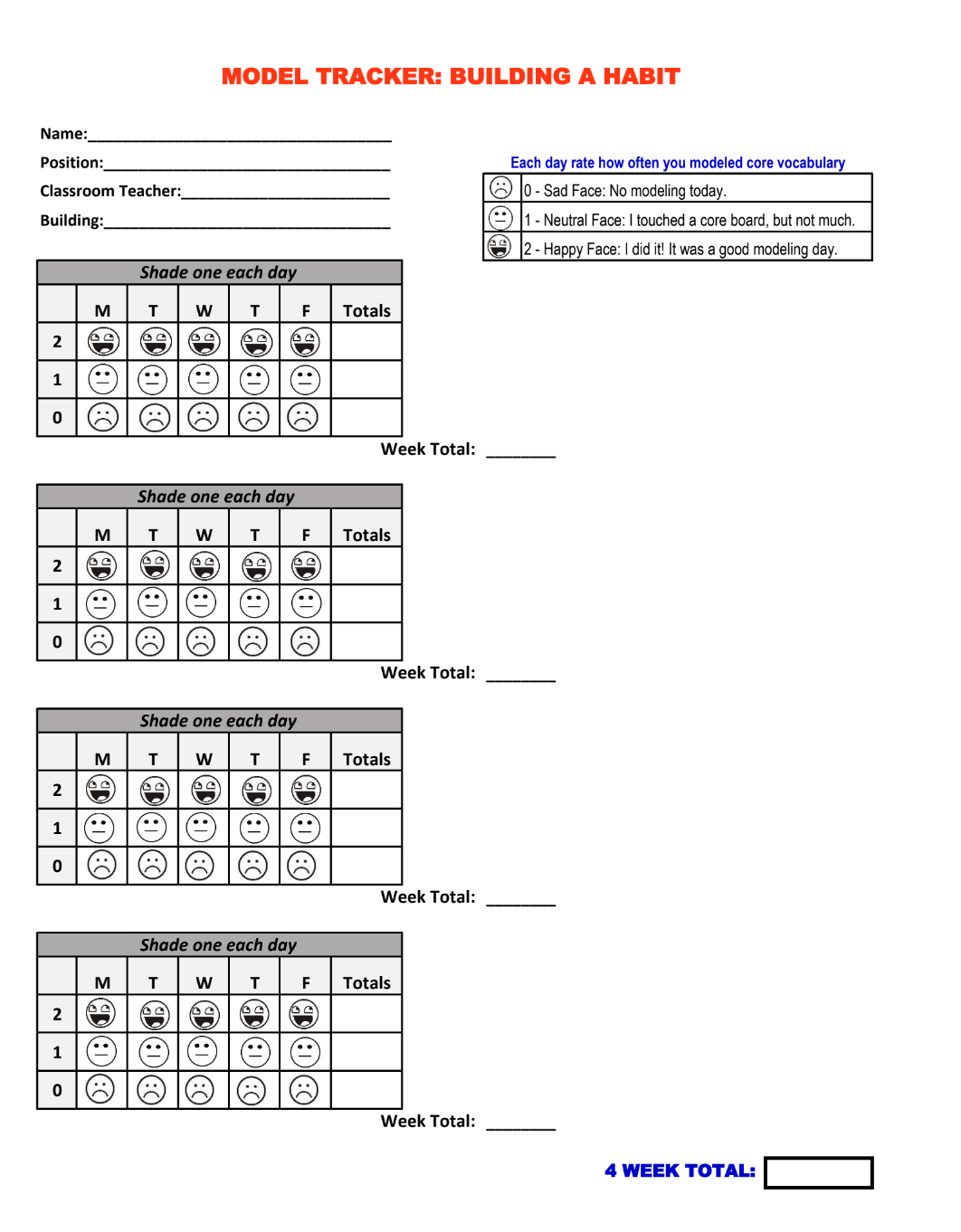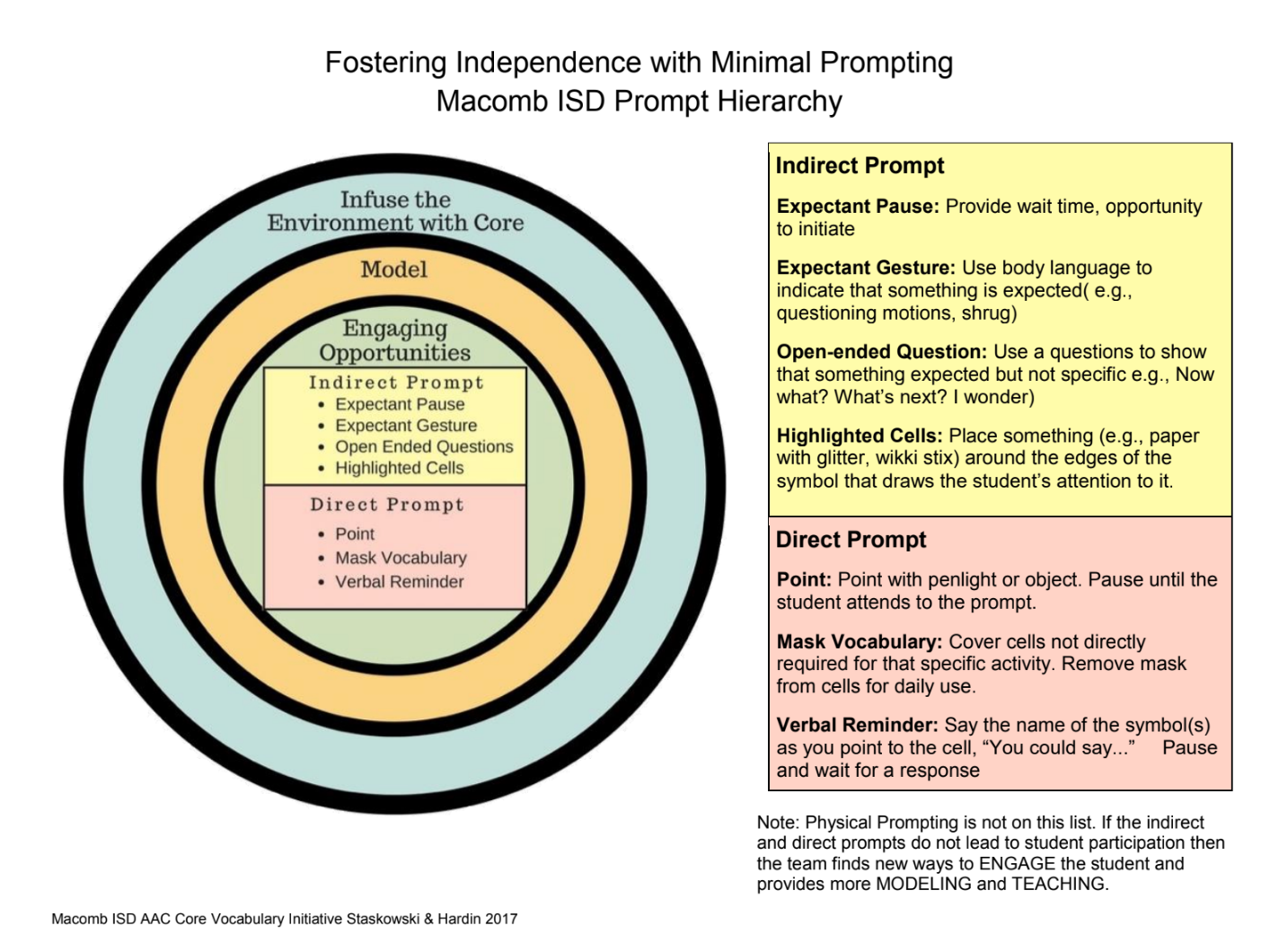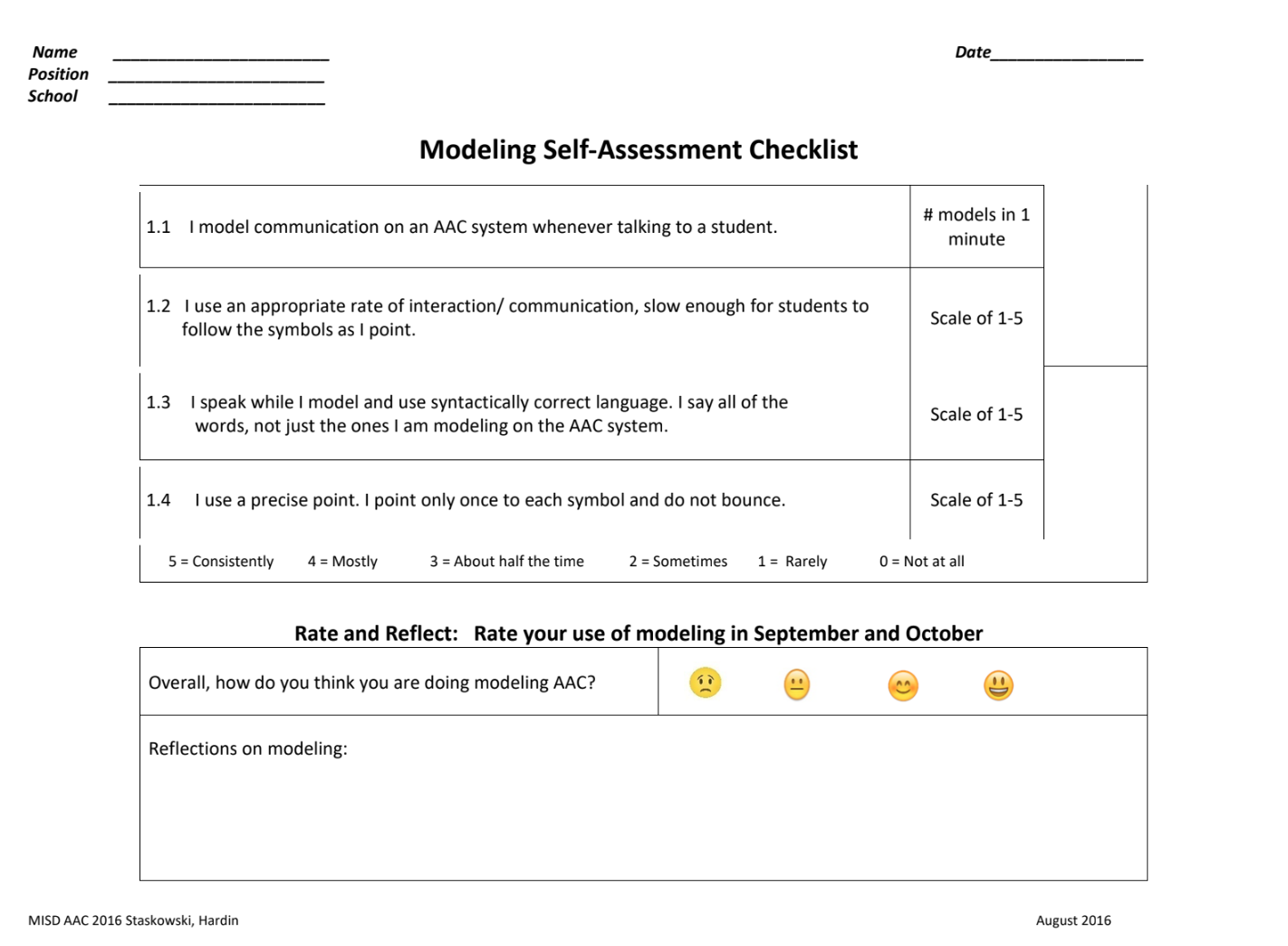Partner Skills: Modeling AAC
Modeling AAC, also called Aided Language Stimulation, is the process of using augmented communication systems with spoken language when communicating with persons who have complex communication needs and/or preferences.
How to Model AAC
Assistiveware: How to Model AAC
Project Core Modeling Module
Project Core Aided Language Input
PrAACtical AAC
Using Aided Language Modeling - Carole Zangari
Pivotal Skills for AAC Intervention: Aided Language Input - Carole Zangari
Tools* to Support Modeling Efforts
*For PDF versions of these tools, please email Jaimie Fons.



Modeling in Action
AAC Modeling: Where is Bear?
Amanda Hartmann Modeling AAC During a Bugs Activity
Modeling Core Language with AAC in a Classroom
Using AAC During Core Language Instruction for the Target "Open"
Modeling AAC on a Speech-Generating Device (SGD)